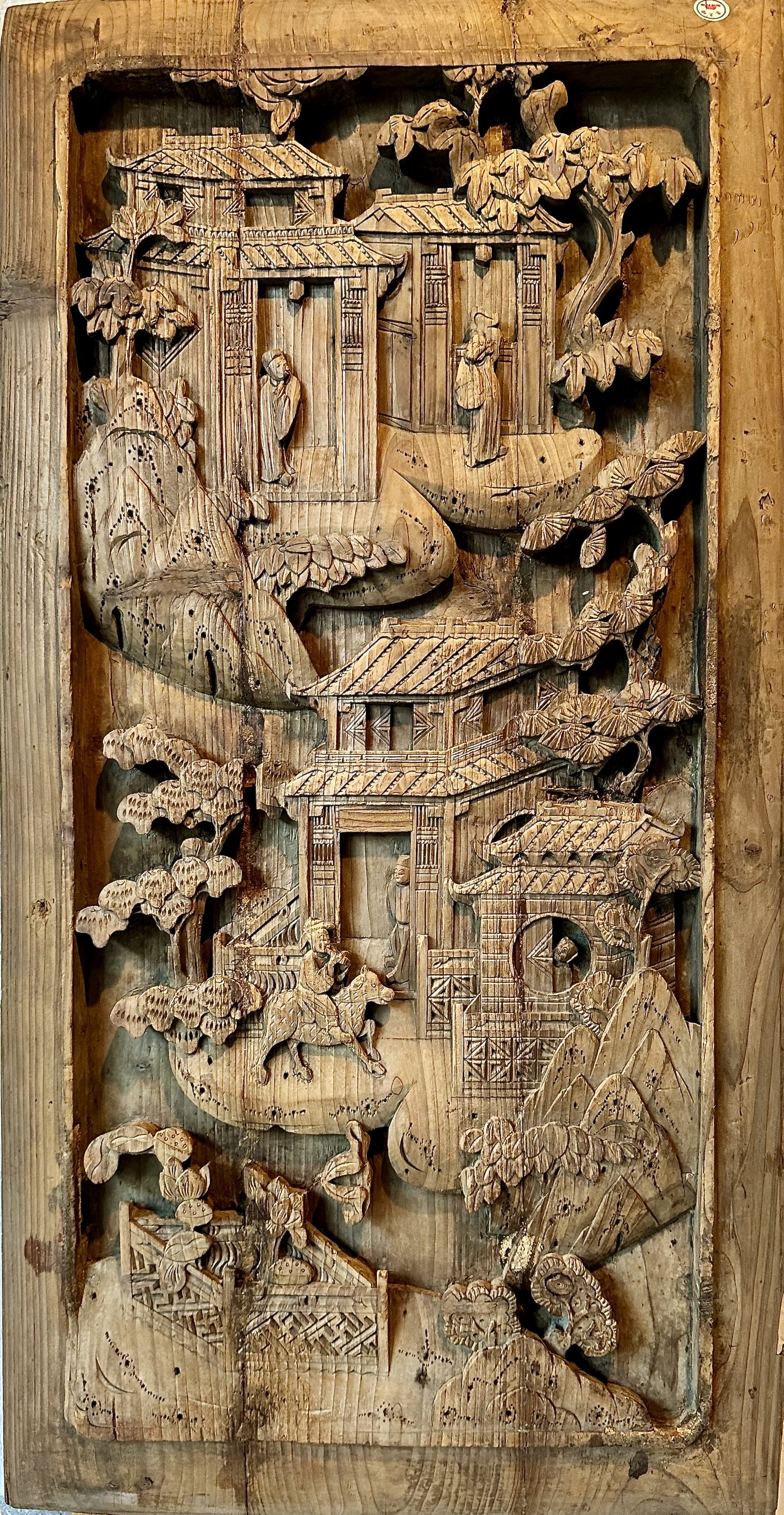AE-98
Material - Pine or Chinese Fir
Period - Mid Qing dynasty
Region - Eastern China
In this lively and provincial high relief carving, we see a figure wearing a hat, while parading a small horse through an idyllic southern style mountain village set amongst rocks, pine trees and other plants. The figure is blowing a wind-instrument, while the village's residents peer out from their doors and windows. The overall mood of the scene, from the rendering of the horse to the town’s residents themselves, alludes to curiosity and friendliness. The architecture of this scene also suggests it takes place in the southern mountainous parts of the country. And the overall composition and balance of this multitiered setting seems to draw some inspiration from traditional Chinese paintings.
The image of a wandering musician or itinerant entertainer perched on a humble mount, playing a wind instrument, and drawing attention in a village or town, holds a place in the Chinese cultural imagination, as this scene appears in various forms throughout history and literature. However, identifying scenes such as the ones depicted here, can be challenging as the imagery can and often does, draw from an extremely diverse range of sources. Often woodblock prints illustrating classical Chinese literature are the source of inspiration. Other times, they may draw from folklore, regional tales, or other stories. So, it’s a tricky endeavor and this scene could refer to any number of the many similar scenes in Chinese folklore.
This also makes it difficult to identify or date this further without knowing if it depicts a certain story in particular. And without access to the original wood block print it was based on, makes it difficult to identify. From the composition, carving quality, and aging it appears to be at least mid to early Qing dynasty.
On the back side of the carving at the bottom, is a "shuāngxǐ " symbol (囍) composed of two xǐ (喜) characters, meaning "joy." When combined into one, this "pseudo-character" means "double happiness." While shuāngxǐ is most often associated with weddings, this symbol is not exclusive to that and may be used to express wishes of good fortune on any auspicious or festive occasion.
The degree of discoloration of the wood itself, also seems to imply this carving may have been at least partially exposed to the elements, suggesting it could have been exterior facing. And the outer chamfered edges tell us this was once inset into a frame, although its dimensions do not suggest its use in a partition door nor window per say, and therefore it is more likely it's use was architectural in nature.
The product description was prepared by Roger Schwendeman with ACF. (https://www.antique-chinese-furniture.com). Roger is a specialist in Asian antiques with focus on antique Chinese window and door panels. Here is one example of his interpretation of the exquisite ArchElements collection.


